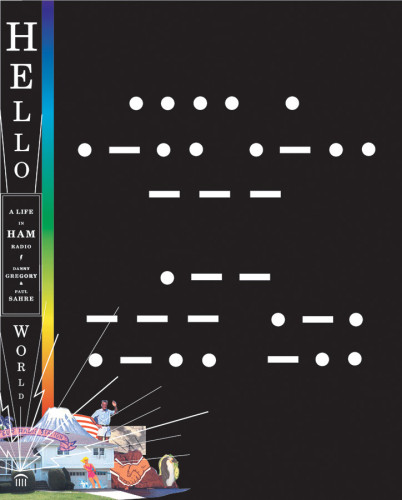
Hello World
Office of Paul Sahre, New York, New York, 2003
Description
We set out to do several things in Hello World:
To capture the experience of Jerry Powell (W2OJW), a long-time ham radio operator from Hackensack, New Jersey, who spoke to thousands of people all over the world for the better part of the century. The title Hello World appears on the cover in Morse code, which is still used by hams. We liked the idea of communicating directly to hams (and only the hams) on the bookshelves.
To explain what on earth ham radio is and why millions of people are still so interested in it. We started out the project knowing nothing about the subject and became so intrigued with it that we now have our own amateur licenses.
To dig below the surface and suggest what Jerry and his friends may have been talking about. Our detective work was based on conversations with hams who are still alive, and on what we discovered about the places and periods in which the conversations took place. There are a number of purely graphic areas in the book where we focus on the people and places Jerry contacted. These areas feature enlargements from the collection of QSLs, the special postcards that hams exchange to verify their contacts.
To create a book that would be relevant to a long-time ham like Jerry and also of interest to someone who knows nothing about the hobby or may only remember the interest of a grandfather or a cousin and wants to know more about what they were doing.
Finally, we wanted to showcase the beautiful and varied QSL cards. Jerry’s collection arrived over seventy years from Africa, Antarctica, India, Indiana, and beyond.
As an introduction for the novice, the book begins with a basic primer about ham radio, and the inside front cover touches on everything from famous hams to ham slang to a Morse code chart for decoding the cover. For the long-time hams, we were sure to carefully reproduce each QSL card in Jerry’s collection, in chronological order, as well as include a foldout map of the world that cross-references all of these radio contacts to their point of origin.
We set out to make this book more than a simple catalogue of vernacular design, even though the beauty of the QSL cards was the initial attraction to this subject.
Juror Notes
“What a wonderful presentation of an unusual subject; it’s never static!” Isabel Warren-Lynch
Credits
- Design firm
- Office of Paul Sahre
- Creative directors
- Danny Gregory, Paul Sahre
- Art directors
- Danny Gregory, Paul Sahre
- Jacket designer
- Paul Sahre
- Design assistants
- Cara Brower, Rogier Klomp, Josh McDowell, Matthew McGuinness, Hen Wee Tan
- Illustrator
- Arline Simon
- Production director
- Janet Behning
- Authors
- Danny Gregory, Paul Sahre
- Editor
- Jennifer N. Thompson
- Publisher
- Princeton Architectural Press
- Trim size
- 6.75 x 9.25”
- Typefaces
- Futura Heavy, New Century Schoolbook, Univers 55
- Jacket printer
- Asia Pacific Offset
- Papers
- 140 gsm AA woodfree, 140 gsm Japanese matte art
- Book type
- Image driven